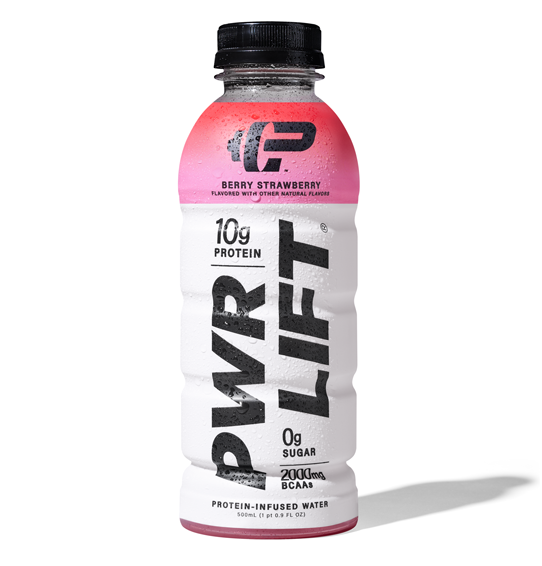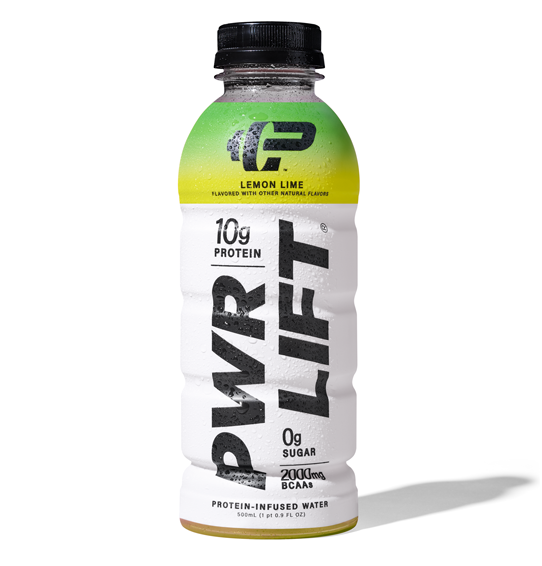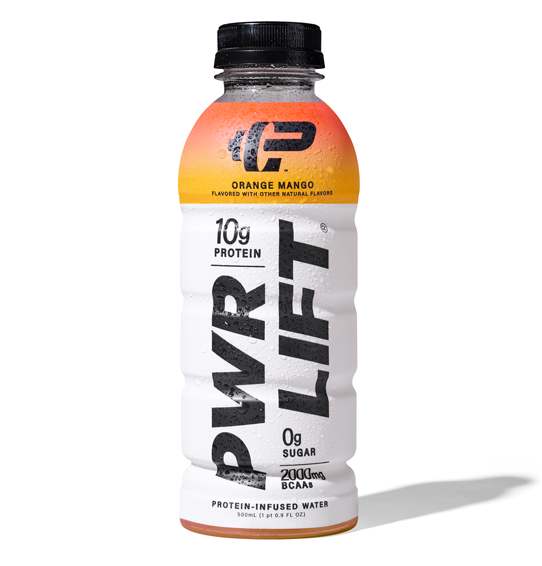Ah, the great protein debate. This topic is so much more complicated than two gym rats bantering about what they're recovering with between reps, so we decided to consult our nutrition experts, Douglas Kalman, PhD, RD and Susan Hewlings, PhD, RD, who compiled research on whey protein and its benefits versus other types of proteins. We broke down their research below, and we hope by the end you'll see where we're coming from with our choice to use whey protein in PWR LIFT.
What is whey protein?
Milk is made of two proteins, casein and whey. Whey protein can be separated from the casein in milk or formed as a by-product of cheese making, but it's actually low in lactose content. It's considered a complete protein, as it contains all nine essential amino acids (AAs).
What are the advantages of whey protein versus other protein sources?
Proteins differ in their quality based on their AAs content, digestibility, and bioavailability. Most research has shown that products containing animal and dairy-based proteins contain the highest percentage of essential amino acids (EAAs) and result in greater hypertrophy and protein synthesis following resistance training, compared to a vegetarian protein-matched control, which typically lacks one or more EAAs.
Milk contains two proteins, whey and casein. They both contain the highest leucine content compared to other proteins (11 percent for whey protein and 9.3 percent for casein). However, whey protein is water soluble and rapidly digestible, while casein is water insoluble and is digested more slowly.
How does whey protein compare to protein from meat like chicken or beef?
Two crossover studies conducted in the International Journal of Sport Nutrition and Exercise Metabolism* characterized plasma AA responses to the intake of 20g of protein. In Study 1, 15 untrained and overnight-fasted subjects consumed 20g protein from skim milk, soy milk, beefsteak, boiled egg, and a liquid meal supplement. In Study 2, 10 fasted and endurance-trained subjects consumed 20g protein from a protein-rich sports bar at rest and after a 60-min submaximal ride.
Although all proteins are considered of high biological values and as such produced similar total AA availability, there were significant differences. The liquid forms of protein achieved max amino acid concentrations in the plasma twice as quickly as solid sources, and skim milk achieved a significantly faster peak leucine concentration compared to all other sources. In addition, skim milk achieved the highest peak for EAAs, BCAAs, and total AAs.
What are the benefits of whey protein after a workout?
Whey benefits recovery by stimulating muscle protein synthesis and offsetting muscle protein breakdown. Because of its high leucine content and digestibility, it is considered an ideal source of EAAs. Consuming a protein supplement during what is referred to as the “anabolic window” (less than one hour before or after resistance exercise) is thought to be ideal for promoting muscle hypertrophy and strength gains with resistance training.
What are the benefits of whey protein before or during a workout?
Timing of protein or AA consumption is important for muscle recovery after exercise. Skeletal muscle uptake of nutrients including AA from the blood is most efficient within the first 30–60 minutes after exercise. Thus, the response of muscle protein synthesis to exercise-induced anabolism is much greater when AA intake is initiated immediately after the end of exercise, as compared to three hours after the end of exercise.
Since protein digestion may be limited during and after exercise and there is a time lapse for absorption to occur, other sources of AAs may be limited during post-exercise recovery. However, it has been suggested that absorption of free AAs is not inhibited by exercise, and supplementation of amino acids to support protein synthesis before, during, and after exercise may be advantageous. In addition, free AAs are absorbed more rapidly than intact protein, making them ideal for post exercise supplementation, when digestion may be slowed and appetite may be decreased.
When the dietary intake of AA and energy is sufficient during post-exercise recovery, a positive protein balance occurs. A study conducted by the American Journal of Physiology* found that in adequately fed subjects, the rates of muscle protein synthesis were increased by 112 percent, 65 percent, and 34 percent at three, 24, and 48 hours post-exercise, compared to the rates of muscle protein breakdown, which were increased by 31 percent and 18 percent at three and 24 hours post-exercise, and returned to resting levels by 48 hours.
However, it is important to emphasize that when considering supplementation of the EAA after exercise, the proportions and amounts of all of the AAs consumed throughout the day should be considered. Particularly true of the branched-chain amino acid (BCAA), as these alone cannot enhance muscle protein synthesis if the availability of other AAs is compromised. All 20 AAs, especially the EAA, are required for protein synthesis to occur.
Therefore, it is key to keep this in mind while discussing the various EAAs and their function and role in stimulating protein synthesis and recovery that none “act alone."
What other health benefits does protein provide?
- Helps with overall growth maintenance and repair of the body
- Helps maintain lean body mass
- Helps with weight loss
- Helps with blood clotting
- May prevent muscle loss as you age
- Found to be important for enzymes, hormones, and cellular functions
- Helps maintain fluid balance
- Helps maintain acid base balance
- Found to play a key role in immune function
What are the benefits specific to BCAAs?
Of the EAAs, the BCAAs—valine, leucine, and isoleucine, especially leucine—have been studied for their role in stimulating protein synthesis. BCAAs are metabolized in skeletal muscle, not the liver like most amino acids, and it has been suggested that they help to prevent protein breakdown and stimulate protein synthesis.
Evidence published by the British Journal of Pharmacology suggests that BCAA supplementation or BCAA-rich diets have numerous positive effects including the regulation of body weight, muscle protein synthesis, glucose homeostasis, and the aging process. They are said to have benefits for exercise recovery including promoting glucose uptake by muscle. A meta-analysis examining the effect of BCAA supplementation on delayed onset muscle soreness (DOMS) (a symptom of exercise-induced muscle damage that occurs following exercise) was conducted, and the results indicated that DOMS decreased following BCAA supplementation when compared to placebo.
While the concept of BCAA supplementation in sports nutrition to promote protein synthesis has been reported and discussed for many years, the authors who researched and published A Guide to Amino Acid and Protein Nutrition interviewed experts in the field and came to the overall conclusion that supplementation of the BCAAs in absence of the other EAAs is not warranted. Anytime a specific action is attributed to an individual amino acid, it should be done considering whole-body chemistry and all of the amino acids working together.
While BCAAs provide some benefits, it's important to note that BCAAs alone cannot enhance muscle protein synthesis if the availability of other amino acids is compromised. All 20 amino acids, especially the EAAs, are required for protein synthesis to occur.
References
1. Bifari F, Nisoli E. Branched-chain amino acids differently modulate catabolic and anabolic states in mammals: a pharmacological point of view. British Journal of Pharmacology. 2017;174(11):1366-1377.
2. Burke LM, Winter JA, Cameron-Smith D, Enslen M, Farnfield M, Decombaz J. Effect of intake of different dietary protein sources on plasma amino acid profiles at rest and after exercise. International journal of sport nutrition and exercise metabolism. 2012;22(6):452-462.
3. Levenhagen DK, Gresham JD, Carlson MG, Maron DJ, Borel MJ, Flakoll PJ. Postexercise nutrient intake timing in humans is critical to recovery of leg glucose and protein homeostasis. American Journal of Physiology, Endocrinology and Metabolism. 2001;280(6):E982-993.
4. Wolfe R. A Guide to Amino Acid and Protein Nutrition. Book Ripple Publishing; 2017.






